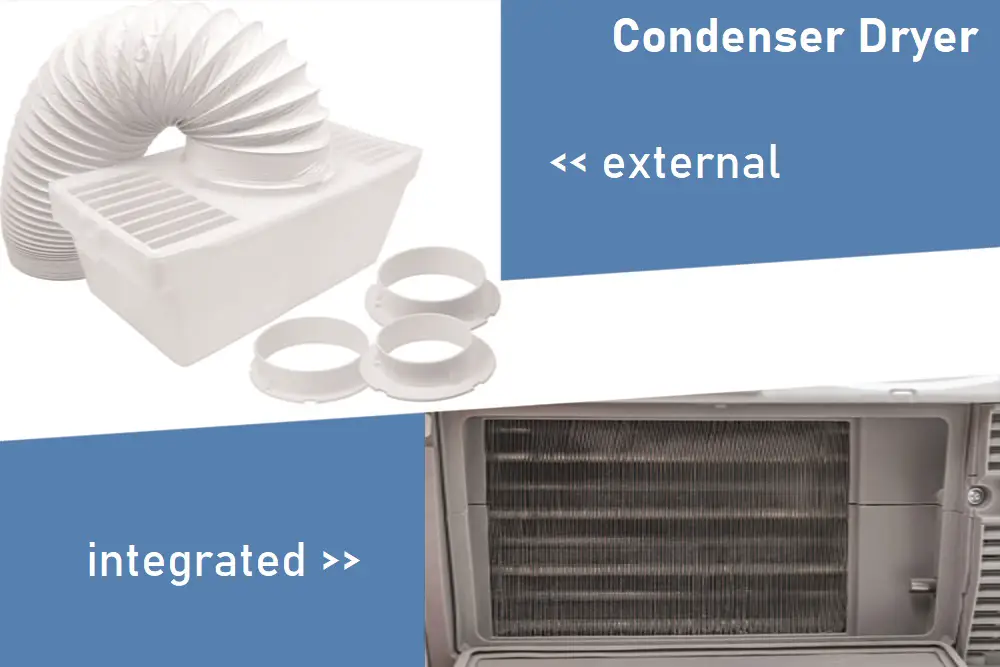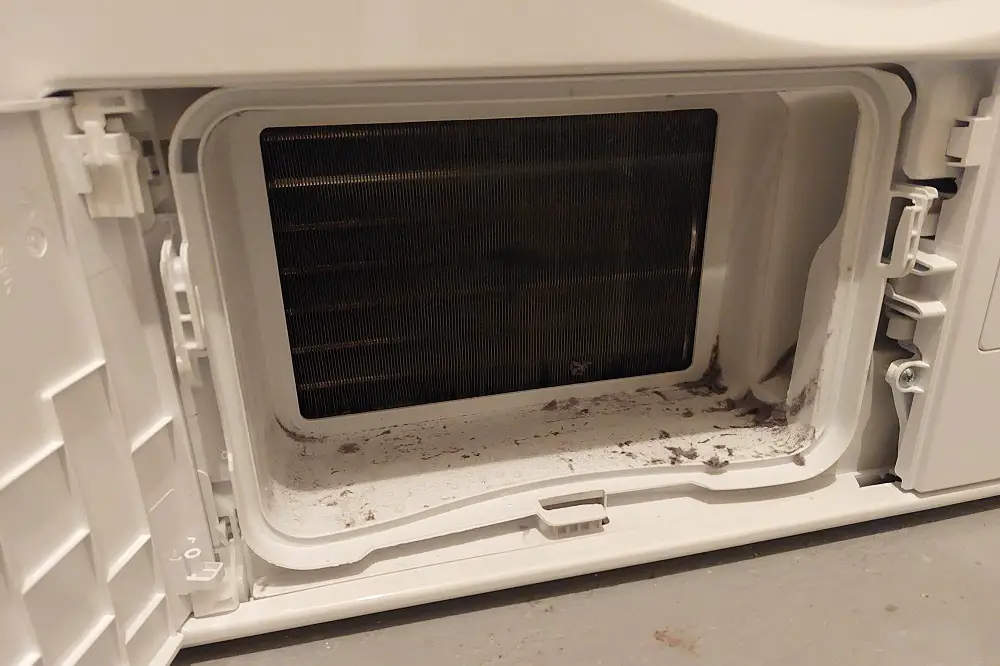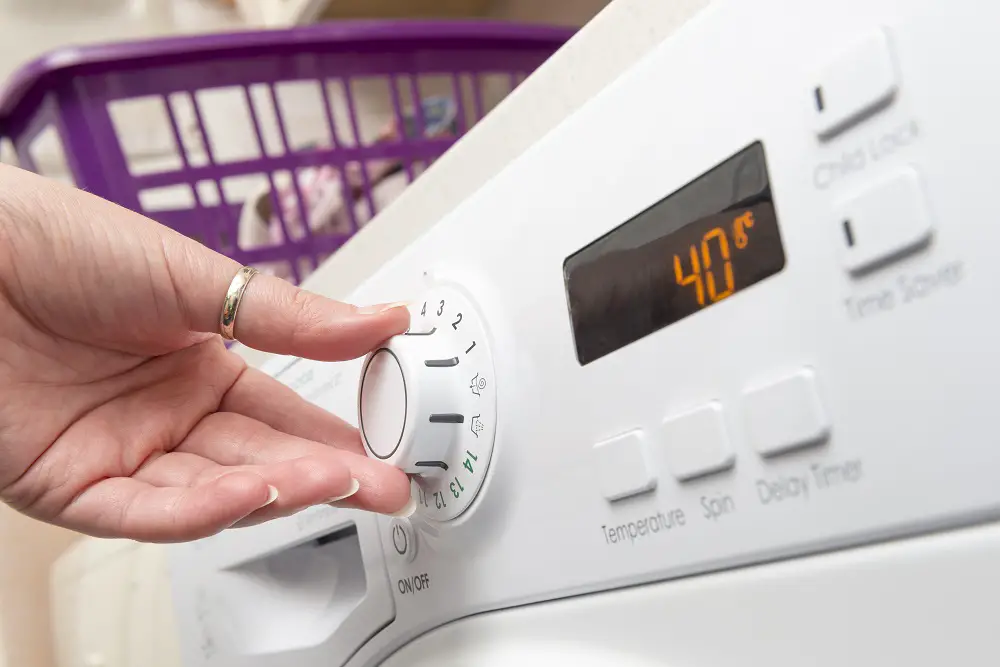Tumble drying is a good alternative for laundry rather than air drying or laying flat to dry. Any clothing that displays the tumble dry symbol (square with a circle inside) can be dried in a tumble dryer.
A modern heat pump tumble dryer usually takes about 145 minutes for average laundry loads, while condenser dryers need around 120 minutes. These long cycles indicate a modern energy-efficient drying process. The duration varies depending on the program, load size, and clothes’ wetness.
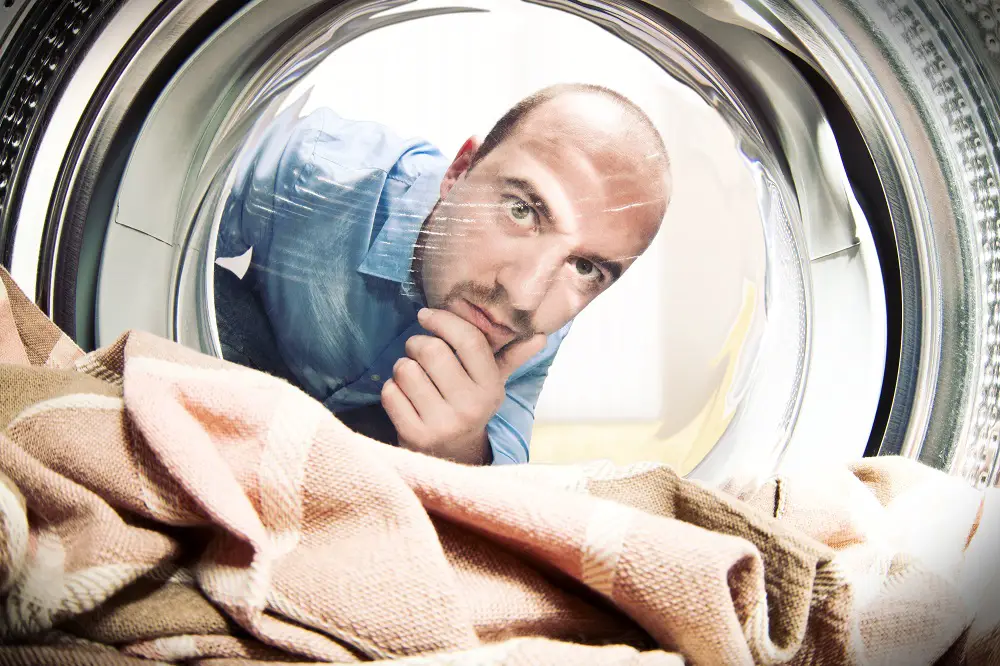
Table of Contents
Typical Dryer Cycle Lengths
Based on the dryer model and capacity, different loads will take different times to dry. Here are some tables with the approximate drying times that provide an idea of how long your laundry needs to be tumble dried.
Typical Heat Pump Dryer Cycle Length
| Program | Cycle Length |
|---|---|
| Regular Dry | 145 minutes |
| Bulky | 130 minutes |
| Delicates | 35 minutes |
| Quick Dry | 30 minutes |
The average heat pump dryer’s cycle length is about 140 minutes for a normal load. They take longer than condenser dryers, yet, offer better protection for your clothes and use less energy.
The heat pump dryers’ cycle length varies heavily with the chosen program because they prefer to apply lower heat. Therefore, it is necessary to extend the cycle length to attain the desired dryness level for regular wet laundry.
Modern heat pump dryers are usually equipped with an automatic sensor drying function that adjusts the length according to the loading’s wetness. This results in big variations in real-life cycle lengths.
Typical Condenser Dryer Cycle Length
| Program | Cycle Length |
|---|---|
| Normal | 120 minutes |
| Delicates | 80 minutes |
| Fast Dry | 40 minutes |
| Heavy Duty | 70 minutes |
The average length of a normal cycle in condenser dryers is about 120 minutes. While condenser dryer cycles also vary largely depending on the chosen program, they are typically 20-40% shorter than heat pump cycles.
They do need more energy and often apply more direct heat to the laundry.
Modern condenser dryers are also usually equipped with sensor drying, but this is less common than in heat pump dryers.
Typical Vented Dryer Cycle Length
| Program | Cycle Length |
|---|---|
| Normal | 65 minutes |
| Heavy Duty | 75 minutes |
| Cotton | 100 minutes |
| Delicates | 30 minutes |
| Perm Press | 45 minutes |
The average vented dryer’s normal cycle length is approximately 65 minutes. Vented dryers are the fastest dryers and the range between specific programs is comparatively small.
Since vented dryers are based on an older and less energy-efficient process, they do not focus on heat-saving properties.
A generally shorter cycle length is nowadays a sign of less energy efficiency.
Why Are Dryers Taking Too Long?
If your tumble dryer is taking too long to finish a cycle, it could be for a few reasons. Most dryer-related problems don’t need a professional; the fixes are straightforward.
Tumble Dry Settings
If the tumble dry setting is on ‘Extra Dry’, it’ll take longer to dry clothes. However, this is an ideal setting for towels, bedding, and jeans.
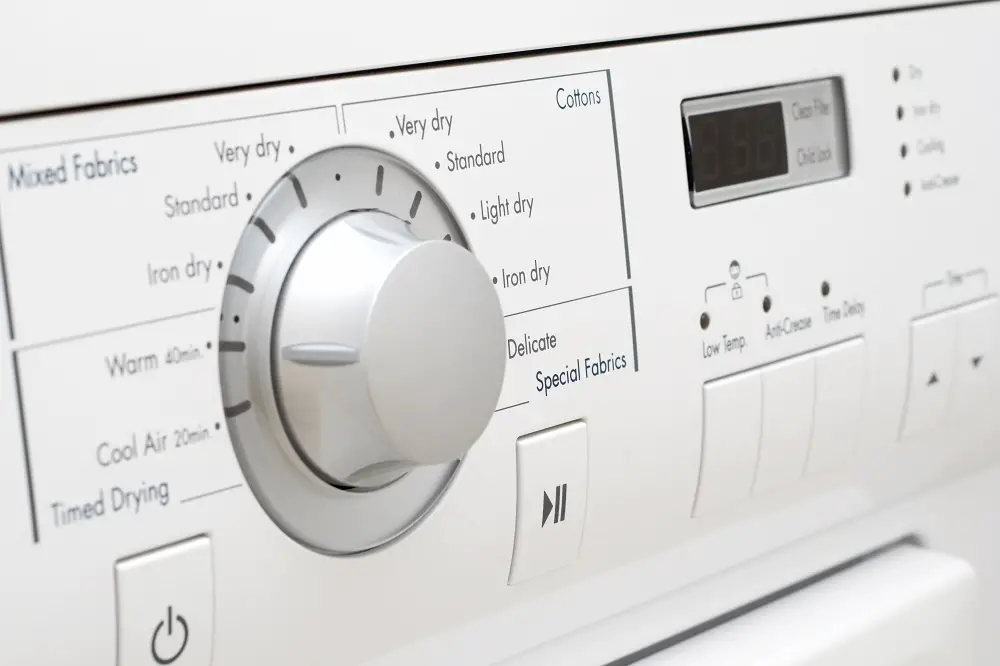
This drying cycle is also the longest when compared to Cupboard Dry (generally dry and ready to be put away), Hanger Dry (to prevent wrinkles), and Iron Dry (clothes are left slightly damp to be ironed soon after).
Energy Efficiency
While the Energy star-rated dryers help save energy costs, they take longer to dry clothes.
A regular dryer may use high heat and shorter drying times, but an energy-efficient dryer uses low heat and longer drying times for drying clothes.
Overloaded Drum
Overloading your tumble dryer restricts air movement inside the drum, resulting in longer drying times.
It could also get the clothes tangled, resulting in wrinkled laundry, and affect the dryer’s balance.
Poor Maintenance
A dirty or clogged lint filter, a dirty sensor, a clogged dryer vent hose, or a damaged drum seal are common reasons the drying process takes longer in a tumble dryer.
This results from irregular or improper maintenance.
How To Reduce Dryer Cycle Length?
With some of these tips, you could use your dryer more efficiently and reduce drying time.
Select the Correct Dryer Cycle
Different fabrics have different drying times. Use the appropriate setting for the fabric you’ll be drying.
For example, the delicate setting is used for delicate fabrics, and the air dry or air fluff cycle (pulls in room temperature air and uses no heat) is used to fluff-up pillows or comforters. The permanent press cycle is for your daily-use items, and a regular cycle uses the highest heat setting (used for jeans, sweats, sheets, towels, etc.)
Use High Spin in Washing Machine
Since wet clothes take longer to dry than damp clothes, it would help to run an extra spin cycle at the highest spin speed in the washing machine to wring off any excess water before putting the clothes in the tumble dryer.
Group Similar Items Together
Sort the laundry by different thicknesses or fabrics and dry each load separately. Similar fabrics will take the same amount of drying time; mixing fabrics might leave some items still wet or cause damage to some items.
Avoid Overloading
You must avoid overloading and underloading the dryer drum.
Overloading might hinder the drying performance, while underloading is using an entire program’s worth of energy for a few items.
(Underloading may be okay if your tumble dryer is sensor controlled).
Use Sensor Drying Rather Than Timed Programmes
If your tumble dryer has a sensor drying option, use it instead of timed cycles. With timed cycles, the clothes tumble in the dryer even if they’re completely dry.
However, with sensor drying, once the laundry has reached the selected program’s dryness level, the drying cycle is stopped.
(More on tumble dryers with sensors here)
Regular Maintenance
Clean the lint filter and dryer vent system regularly. Also, wipe the dryer’s exterior and interior of the dryer drum with a cloth dipped in mild soap or cleaning solution and dry with another cloth.
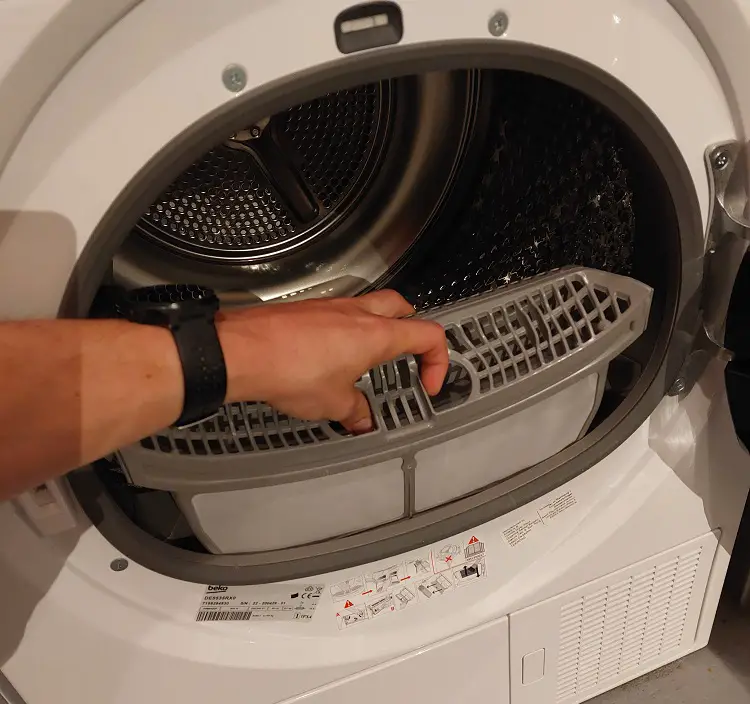
You can find a helpful guide about servicing the dryer here.
General Tips
Throw a dry towel into the drum with the laundry; it will absorb moisture and reduce drying times.
You could also use dryer balls to reduce drying time by 20 – 30%.
While you must keep your dryer in a well-ventilated space, high humidity can increase drying times. Place a dehumidifier near the dryer to decrease the humidity levels around the dryer.
Conclusion
A higher temperature will take a shorter time to dry, while lower temperatures take longer.
Modern tumble dryers are using lower temperatures to protect the fabrics and increase efficiency. This results in a much longer drying cycle but saves a lot of energy.
As convenient as a tumble dryer is to get your laundry dry within less than an hour on average, a few things can help shorten the drying time and have your dryer work efficiently.
Remember to sort your laundry, not overload or underload, select the right drying cycle, regularly maintain your dryer, and use sensor drying instead of timed programs for shorter drying times.
If you find your dryer taking longer than usual to dry a load, inspect it and call for help if you can’t sort it by yourself.
